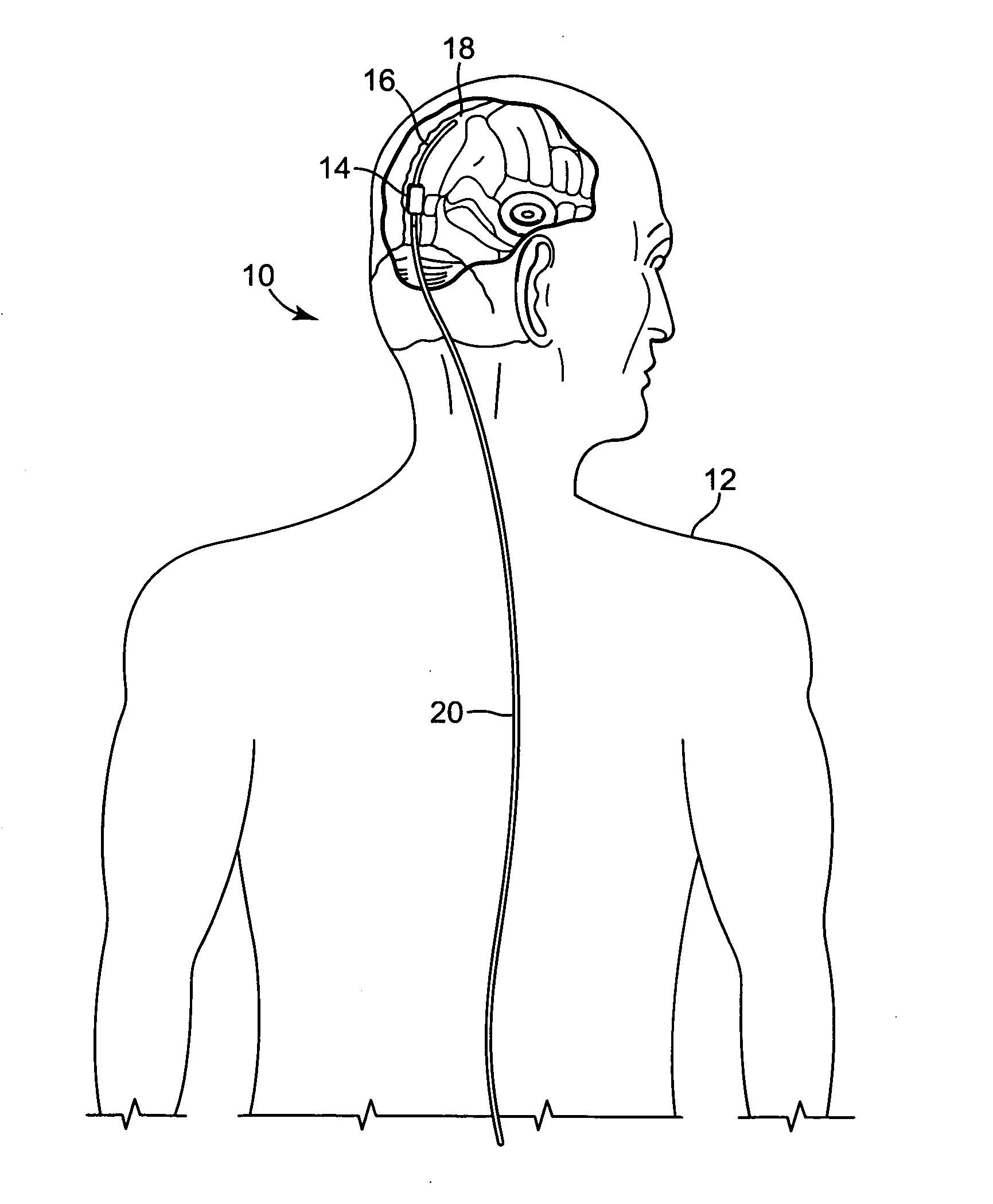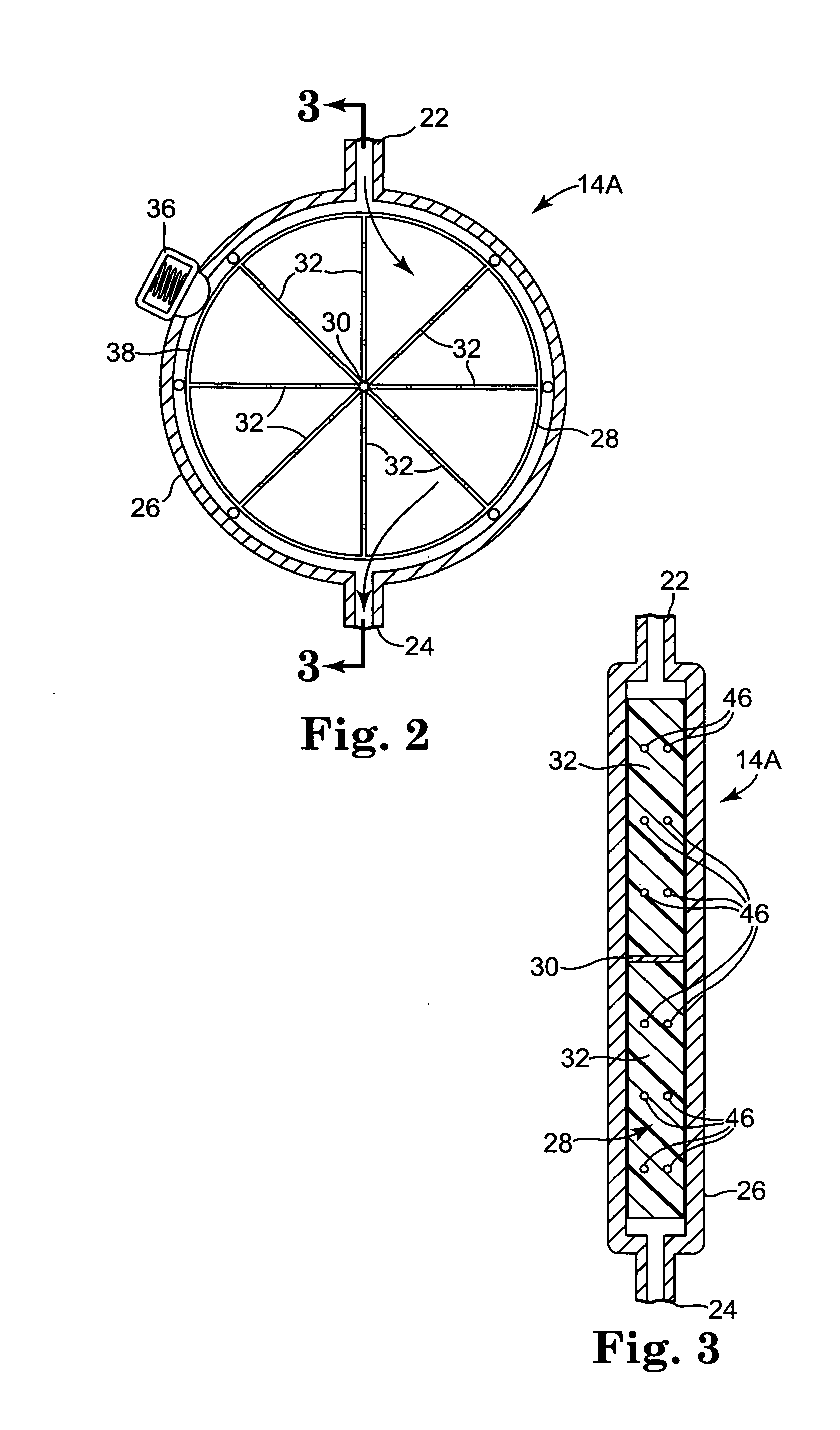Implantable cerebral spinal fluid flow device and method of controlling flow of cerebral spinal fluid
a technology of cerebral spinal fluid and flow control device, which is applied in the direction of intravenous devices, wound drains, etc., can solve the problems of neurological damage, too much drainage, and inability to re-absorb cerebral spinal fluid at the proper ra
- Summary
- Abstract
- Description
- Claims
- Application Information
AI Technical Summary
Benefits of technology
Problems solved by technology
Method used
Image
Examples
Embodiment Construction
[0049] Consistent and reliable drainage of cerebral spinal fluid from one area of the body to another, e.g., from a ventricle or ventricles of the brain to another region of the body such as the peritoneum pr sagittal sinus, can be desirable. A consistent and reliable drainage method and system can minimize the expense as well as trauma and inconvenience to the patient associated with cerebral spinal fluid revision surgery and can also lesson risk to the patient due to an inoperative cerebral spinal fluid drainage system.
[0050]FIG. 1 illustrates an embodiment of a cerebral spinal fluid shunt, or drainage, system 10 for draining cerebral spinal fluid from one area, preferably the ventricles of brain, of the body of patient 12 to another area of the body of patient 12. Cerebral spinal fluid can preferably be drained to the peritoneum and / or atrium and, alternatively, to the sagittal sinus. Shunt system 10 may consist solely of a catheter having a lumen to transport cerebral spinal fl...
PUM
 Login to View More
Login to View More Abstract
Description
Claims
Application Information
 Login to View More
Login to View More - R&D
- Intellectual Property
- Life Sciences
- Materials
- Tech Scout
- Unparalleled Data Quality
- Higher Quality Content
- 60% Fewer Hallucinations
Browse by: Latest US Patents, China's latest patents, Technical Efficacy Thesaurus, Application Domain, Technology Topic, Popular Technical Reports.
© 2025 PatSnap. All rights reserved.Legal|Privacy policy|Modern Slavery Act Transparency Statement|Sitemap|About US| Contact US: help@patsnap.com



